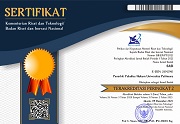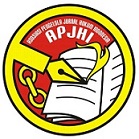TELAAH KONSTITUSIONAL PENGATURAN IMPEACHMENT PRESIDEN DAN WAKIL PRESIDEN DALAM MEWUJUDKAN DEMOKRASI
 )
)
(1) Fakultas Hukum Universitas Pattimura, Indonesia
 Corresponding Author
Corresponding Author
Abstract
The President as the holder of power operation of the Republic of Indonesia as mandated by the 1945 constitution, have full responsibility in the case of the head of state and head of government. In running the government, the president is assisted by a vice president. When the president and vice president elected directly by the people in a general election is considered to be incapable of running the state government for reasons that have been determined by the 1945 Constitution, the legislative body that oversees the running of the government led by the president can give a confidence vote in the name parliament is then submitted to the judiciary in this case the Constitutional Court to decide the president and / or vice president deserves to be dismissed from office or not, and then a plenary session of People's Consultative Assembly (MPR), which is a combination of DPR and DPD to determine the dismissal of the President from office. Of course, the President of Indonesia dismissal mechanism which implicitly specified in the 1945 Constitution states that when the president removed from office, the Vice President also dismissed as "a package" is selected in elections democracy. in constitutional system, dismissing the President in the middle of a term called with the power of "impeachment".
The feud between the Parliament and the President in the year 2001, where the House of Representatives after the General Election in 1999 by President Abdurrahman Wahid appointed by the Assembly election results in 1999 suffered a feud that continued confidence vote Parliament on President Abdurrahman Wahid or Gus Dur commonly called. Vote of no confidence on the results of the feud then continued the dismissal or resignation of President Abrurrahman Wahid from the presidency through a Special Session in 2001 the Legislative Act No. III / MPR / 2001. The Act contained in the revocation matter of state power from the hands of President Abdurrahman Wahid who was replaced by Megawati Soearnoputri as Vice President at the time.
Keywords
DOI
10.47268/sasi.v21i1.312
Published
2015-06-01
How To Cite
@article{SASI312,
author = {J Sahalessy},
title = {TELAAH KONSTITUSIONAL PENGATURAN IMPEACHMENT PRESIDEN DAN WAKIL PRESIDEN DALAM MEWUJUDKAN DEMOKRASI},
journal = {SASI},
volume = {21},
number = {1},
year = {2015},
keywords = {impeachment; democracy},
abstract = {The President as the holder of power operation of the Republic of Indonesia as mandated by the 1945 constitution, have full responsibility in the case of the head of state and head of government. In running the government, the president is assisted by a vice president. When the president and vice president elected directly by the people in a general election is considered to be incapable of running the state government for reasons that have been determined by the 1945 Constitution, the legislative body that oversees the running of the government led by the president can give a confidence vote in the name parliament is then submitted to the judiciary in this case the Constitutional Court to decide the president and / or vice president deserves to be dismissed from office or not, and then a plenary session of People's Consultative Assembly (MPR), which is a combination of DPR and DPD to determine the dismissal of the President from office. Of course, the President of Indonesia dismissal mechanism which implicitly specified in the 1945 Constitution states that when the president removed from office, the Vice President also dismissed as "a package" is selected in elections democracy. in constitutional system, dismissing the President in the middle of a term called with the power of "impeachment".The feud between the Parliament and the President in the year 2001, where the House of Representatives after the General Election in 1999 by President Abdurrahman Wahid appointed by the Assembly election results in 1999 suffered a feud that continued confidence vote Parliament on President Abdurrahman Wahid or Gus Dur commonly called. Vote of no confidence on the results of the feud then continued the dismissal or resignation of President Abrurrahman Wahid from the presidency through a Special Session in 2001 the Legislative Act No. III / MPR / 2001. The Act contained in the revocation matter of state power from the hands of President Abdurrahman Wahid who was replaced by Megawati Soearnoputri as Vice President at the time.},
issn = {2614-2961}, pages = {1--11} doi = {10.47268/sasi.v21i1.312},
url = {https://fhukum.unpatti.ac.id/jurnal/sasi/article/view/312}
}
Hamdan Zoelva. 2005. Impeachment Presiden: Alasan Tindak Pidana Pemberhentian Presiden Menurut UUD 1945. Jakarta: Konstitusi Press.
Soimin. 2009. Impeachment Presiden dan Wakil Presiden di Indonesia. Yogyakarta: UII Press.
Munir Fuady. 2009. Teori Negara Hukum Modern (Rechsstaat). Bandung: Refika Aditama.
Firmansyah Arifin, dkk . 2005. Lembaga Negara dan Sengketa Kewenangan Antar Lembaga. Jakarta: Konsorsium Reformasi Hukum Nasional.
Dahlan Thaib. 1989. Implementasi Sistem Ketatanegaraan Menurut UUD 1945. Yogyakarta: Liberty.
Miriam Budiharjo. 1991. Dasar-Dasar Ilmu Politik. Jakarta: Gramedia.
Bagir Manan. 2003. Lembaga Kepresidenan.Yogyakarta: FH UII Press.
Moh. Kusnardi dan Bintan Siragih. 2000. Ilmu Negara, Edisi Revisi. Jakarta: Gaya Media Pratama
Jimly Asshiddiqie. 2005. Laporan Penelitian. Mekanisme Impeachment dan Hukum Acara Mahkamah Konstitusi. Jakarta: Kerjasama Mahkamah Konstitusi Republik Indonesia dengan Konrad Adenauer Siftung.
Ni’matul Huda. 2006. Hukum Tata Negara Indonesia. Jakarta: Raja Grafindo Persada.
| Dublin Core | PKP Metadata Items | Metadata for this Document | |
| 1. | Title | Title of document | TELAAH KONSTITUSIONAL PENGATURAN IMPEACHMENT PRESIDEN DAN WAKIL PRESIDEN DALAM MEWUJUDKAN DEMOKRASI |
| 2. | Creator | Author's name, affiliation, country | J Sahalessy; Fakultas Hukum Universitas Pattimura; Indonesia |
| 3. | Subject | Discipline(s) | |
| 3. | Subject | Keyword(s) | impeachment; democracy |
| 4. | Description | Abstract | The President as the holder of power operation of the Republic of Indonesia as mandated by the 1945 constitution, have full responsibility in the case of the head of state and head of government. In running the government, the president is assisted by a vice president. When the president and vice president elected directly by the people in a general election is considered to be incapable of running the state government for reasons that have been determined by the 1945 Constitution, the legislative body that oversees the running of the government led by the president can give a confidence vote in the name parliament is then submitted to the judiciary in this case the Constitutional Court to decide the president and / or vice president deserves to be dismissed from office or not, and then a plenary session of People's Consultative Assembly (MPR), which is a combination of DPR and DPD to determine the dismissal of the President from office. Of course, the President of Indonesia dismissal mechanism which implicitly specified in the 1945 Constitution states that when the president removed from office, the Vice President also dismissed as "a package" is selected in elections democracy. in constitutional system, dismissing the President in the middle of a term called with the power of "impeachment".The feud between the Parliament and the President in the year 2001, where the House of Representatives after the General Election in 1999 by President Abdurrahman Wahid appointed by the Assembly election results in 1999 suffered a feud that continued confidence vote Parliament on President Abdurrahman Wahid or Gus Dur commonly called. Vote of no confidence on the results of the feud then continued the dismissal or resignation of President Abrurrahman Wahid from the presidency through a Special Session in 2001 the Legislative Act No. III / MPR / 2001. The Act contained in the revocation matter of state power from the hands of President Abdurrahman Wahid who was replaced by Megawati Soearnoputri as Vice President at the time. |
| 5. | Publisher | Organizing agency, location | Faculty of Law, Universitas Pattimura |
| 6. | Contributor | Sponsor(s) | |
| 7. | Date | (YYYY-MM-DD) | 2015-06-01 |
| 8. | Type | Status & genre | Peer-reviewed Article |
| 8. | Type | Type | |
| 9. | Format | File format | |
| 10. | Identifier | Uniform Resource Identifier | https://fhukum.unpatti.ac.id/jurnal/sasi/article/view/312 |
| 10. | Identifier | Digital Object Identifier | 10.47268/sasi.v21i1.312 |
| 11. | Source | Title; vol., no. (year) | SASI; Vol 21, No 1 (2015): Volume 21 Nomor 1, Januari - Juni 2015 |
| 12. | Language | English=en | en |
| 13. | Relation | Supp. Files | |
| 14. | Coverage | Geo-spatial location, chronological period, research sample (gender, age, etc.) | |
| 15. | Rights | Copyright and permissions | Copyright: Authors who publish their manuscripts in this Journal agree to the following conditions: 1. The copyright in each article belongs to the author, as well as the right to patent. 2. Authors can enter into separate, additional contractual arrangements for the non-exclusive distribution of the journal's published version of the work (e.g., post it to an institutional repository or publish it in a book), with an acknowledgment of its initial publication in this journal. 3. Authors are permitted and encouraged to post their work online (e.g., in institutional repositories or on their website) before and during the submission process, as it can lead to productive exchanges, as well as earlier and greater citation of published work. 4. Authors have the right to self-archiving of the article (Author Self-Archiving Policy)
License: The SASI Journal is disseminated based on the Creative Commons Attribution-NonCommercial 4.0 International license terms. This license allows anyone to copy and redistribute this material in any form or format, compose, modify, and make derivatives of this material for any purpose. You cannot use this material for commercial purposes. You must specify an appropriate name, include a link to the license, and certify that any changes have been made. You can do this in a way that is appropriate but does not imply that the licensor supports you or your use.
|
Copyright (c) 2020 J Sahalessy

This work is licensed under a Creative Commons Attribution-NonCommercial 4.0 International License.

 : 3624 times
: 3624 times Download : 1457 times
Download : 1457 times
















